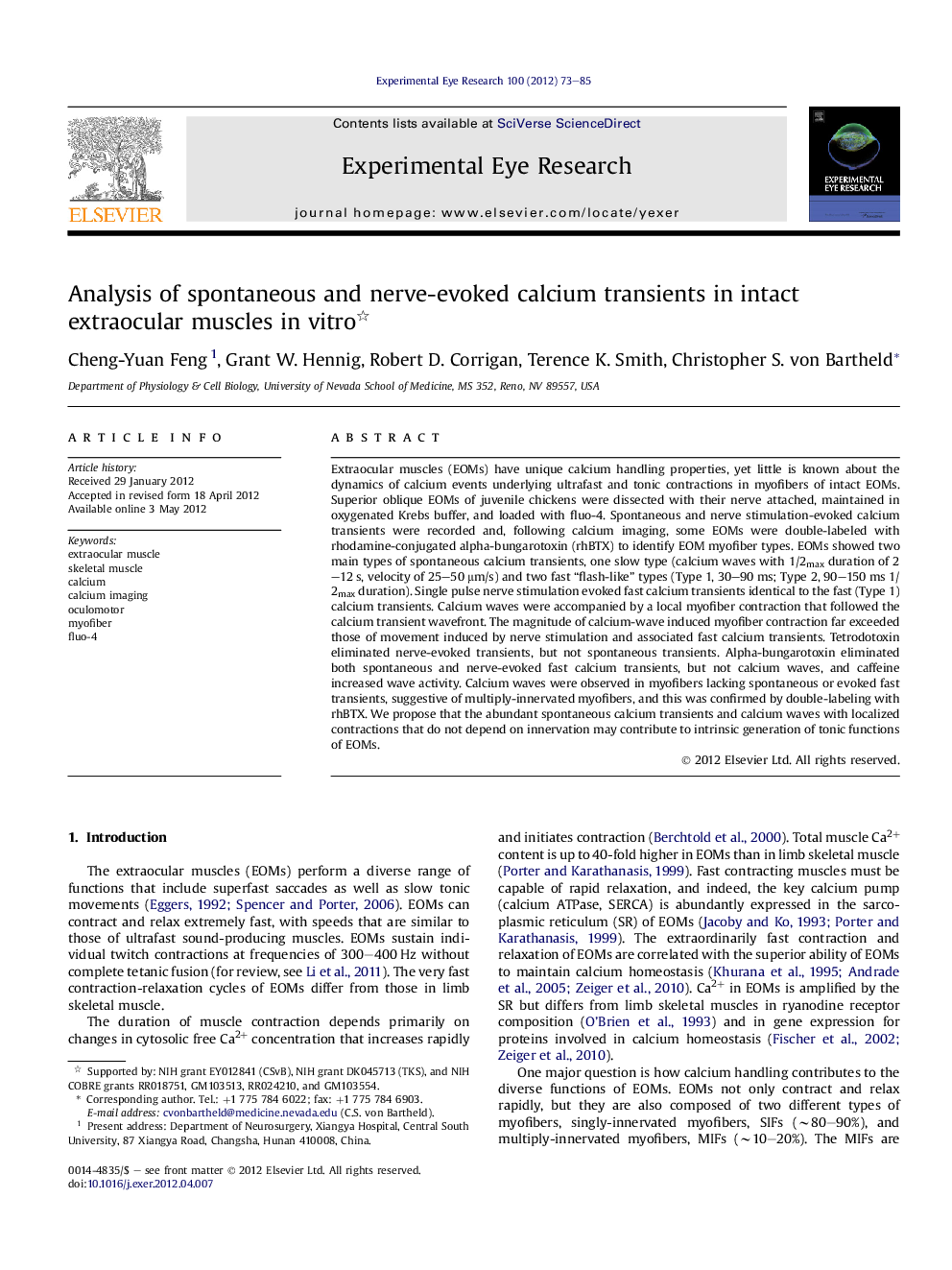| Article ID | Journal | Published Year | Pages | File Type |
|---|---|---|---|---|
| 4011393 | Experimental Eye Research | 2012 | 13 Pages |
Extraocular muscles (EOMs) have unique calcium handling properties, yet little is known about the dynamics of calcium events underlying ultrafast and tonic contractions in myofibers of intact EOMs. Superior oblique EOMs of juvenile chickens were dissected with their nerve attached, maintained in oxygenated Krebs buffer, and loaded with fluo-4. Spontaneous and nerve stimulation-evoked calcium transients were recorded and, following calcium imaging, some EOMs were double-labeled with rhodamine-conjugated alpha-bungarotoxin (rhBTX) to identify EOM myofiber types. EOMs showed two main types of spontaneous calcium transients, one slow type (calcium waves with 1/2max duration of 2–12 s, velocity of 25–50 μm/s) and two fast “flash-like” types (Type 1, 30–90 ms; Type 2, 90–150 ms 1/2max duration). Single pulse nerve stimulation evoked fast calcium transients identical to the fast (Type 1) calcium transients. Calcium waves were accompanied by a local myofiber contraction that followed the calcium transient wavefront. The magnitude of calcium-wave induced myofiber contraction far exceeded those of movement induced by nerve stimulation and associated fast calcium transients. Tetrodotoxin eliminated nerve-evoked transients, but not spontaneous transients. Alpha-bungarotoxin eliminated both spontaneous and nerve-evoked fast calcium transients, but not calcium waves, and caffeine increased wave activity. Calcium waves were observed in myofibers lacking spontaneous or evoked fast transients, suggestive of multiply-innervated myofibers, and this was confirmed by double-labeling with rhBTX. We propose that the abundant spontaneous calcium transients and calcium waves with localized contractions that do not depend on innervation may contribute to intrinsic generation of tonic functions of EOMs.
► Extraocular myofibers display two types of spontaneous calcium transients. ► Slow calcium transients can generate local myofiber contractions. ► Slow calcium transients occur in multiply-innervated myofibers. ► Extraocular muscles may use slow calcium transients to implement tonic functions.
